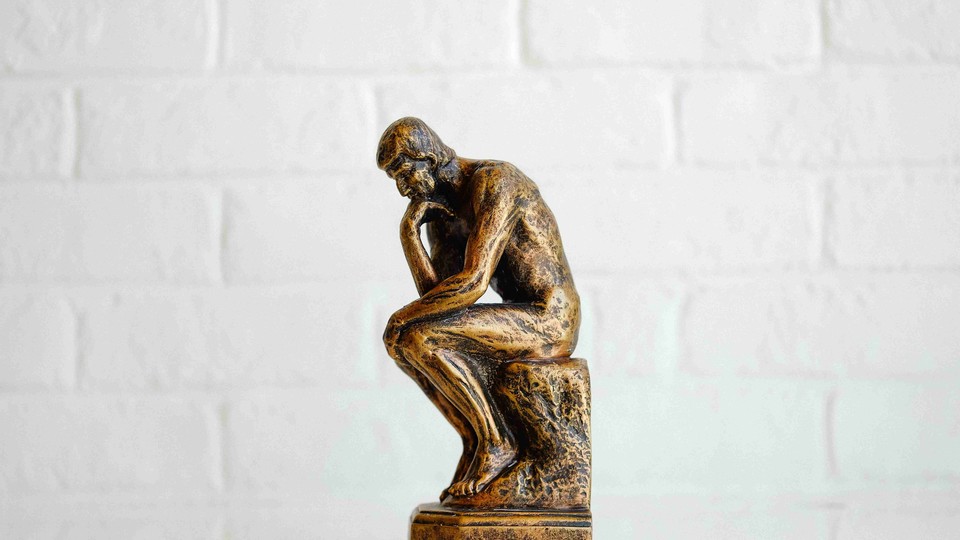
Know Thyself
Where Does The Abstract Sense Of "The Self" Reside?
Based on research by Hajo Adam (former Rice Business professor), Otilia Obodaru (former Rice Business professor), and Adam D. Galinsky
Where Does The Abstract Sense Of "The Self" Reside?
- How individuals construe themselves varies by culture and gender.
- New research shows people with an independent self-construal are more likely to locate the self in the brain; those with an interdependent self-construal are more likely to locate the self in the heart.
- Where people locate the self influences their decision-making, especially on hot-button topical issues.
The Greek maxim, “know thyself” has, for millennia, entreated philosophers, scholars, spiritual guides and common men to understand one’s self in order to gain wisdom and perhaps better lead others. But where does the abstract sense of “the self” actually reside? Could it be in the body? And if so, which part?
Researchers have recently determined that the construct of the self does indeed require better understanding of the physical body and various aspects of it. For example, people often link the abstract concept of moral purity to physical cleanliness, or the concept of power to expansive body postures. Social scientists have tended to back Hippocrates’ view: “both joys and sorrows come from nothing else but the brain.” The study of memories and personal aspiration, for example, have led social scientists to the conclusion that the brain, from which these self-defining features seem to spring, must beget the self. And neuroscientists obviously agree, not questioning that the self resides in the brain, they directly study which specific areas of the brain are associated with the self.
However, former Rice Business professors Hajo Adam and Otilia Obodaru, with colleague Adam Galinksy of Columbia Business School, recently completed a study that shows people’s perception of the location of the self in the brain is not a given. Various parts of the body, such as the eyes and the stomach, also are considered to be locations for the self, while the brain and the heart have stronger connection with the self-concept than other parts of the body.
Furthermore, according to the research, where people believe the self to be located is strongly correlated with culture and gender. Because U.S. citizens and men are more likely to have an independent self-construal — that is, their sense of self is characterized by separateness from others and a valuing of their own personal goals over the goals of the group — they tend to select the brain as the location of the self. Indian citizens and women tend toward an interdependent self-construal, one that links connectedness to others with one’s self-concept, and tend toward finding the self within the heart.
Why does the location of the self matter? Obodaru and Adam found that where an individual locates his or her sense of self can actually affect decision making. In one of their studies, participants were asked to consider being cloned and informed that they’d need to choose from which part of the body the cloning cells would be harvested. They were told that because some body parts are more connected to a person’s sense of self, their cells have a higher capacity to produce a clone that is identical not only in appearance but also in terms of identity and sense of self. Participants chose the brain most often (44 percent) followed by the heart (25 percent). And, as expected, men and Americans were more likely to choose the brain than women and Indian citizens.
These types of decisions held for all types of dilemmas — from those related to giving to a charity that supported heart-related illness or those related to brain disorders, such as Alzheimer’s, to those related to end-of-life decisions.
For example, people who believed that the brain contains the self contributed more than twice as much money to a charity fighting Alzheimer’s than people who believed that the heart contains the self. The reverse pattern also held true: People who believed that the heart contains the self contributed more than twice as much money to a charity fighting heart attacks than people who believed that the brain contains the self.
Furthermore, people evaluate information more favorably when it is congruent with their brain or heart preferences. And that’s important for business. Developing organizational commitment, managing work role transitions and work and non-work boundaries and achieving leadership success all require understanding employees’ self-concepts — both for the employees and the employers. For example, a brain-based person may be more sensitive to competence-conveying information, but less sensitive to warmth-conveying information. A heart-based person may more readily develop affect-based trust. Taking the time to develop messaging in such a way as to tug at those employees’ self-concepts allows us to better align the company’s goals with the employees’ goals.
The same can be true for external audiences as well. Leadership speeches, entrepreneurial pitches or marketing materials that invoke the heart or the brain could be differentially persuasive, depending on the recipient’s perceived location of the self.
Hajo Adam is a former assistant professors of management at Jones Graduate School of Business at Rice University
Otilia Obodaru is a former assistant professors of management at Jones Graduate School of Business at Rice University
To learn more, please see: Adam, H., Obodaru, O., & Galinsky, A. D. (2015). Who you are is where you are: Antecedents and consequences of locating the self in the brain or the heart. Organizational Behavior and Human Processes, 128, 74-83.
Never Miss A Story


